Michigan Amish
Michigan is home to the sixth-largest Amish population
 Michigan has a long history of Amish settlement, with the first Amish settling in the Great Lakes State in 1895. Today Michigan’s Amish population numbers approximately 11,000.
Michigan has a long history of Amish settlement, with the first Amish settling in the Great Lakes State in 1895. Today Michigan’s Amish population numbers approximately 11,000.
Michigan’s 86 Amish church districts are scattered over 35 settlements, from Hillsdale and Branch Counties in the south, to Mackinac County in the Upper Peninsula.
Amish communities in Michigan include:
- Centreville, St. Joseph County-The Centreville community is the oldest and largest in the state. Around 1,500 Amish live here
- Quincy-Quincy is a Swiss Amish settlement of about 150 households
- Branch County-Branch County is home to 5 distinct Amish communities
- Hillsdale County-home to 2 settlements, including at Camden
- Mio, Oscoda County-Mio is today home to a small settlement, and once was home to a community that lasted 50 years
- Upper Peninsula-a single Amish community exists in Mackinac County
The Centreville Amish settlement is Michigan’s oldest and largest
The Amish community at Centreville in St. Joseph County (founded 1910) is the oldest and largest in Michigan.
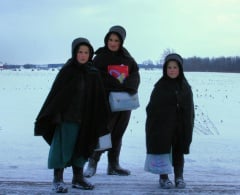
Consisting of 11 church districts (roughly 1,500 individuals), this settlement has been in existence 100 years. The Centreville Amish community was founded by families from the Swiss Amish communities in Adams and Allen counties in Indiana.
The Swiss Amish, an Old Order ethnic subgroup, are distinct from Pennsylvania German-ethnicity Amish.
Swiss Amish speak a different German dialect, are typically more conservative when it comes to technology, and tend to marry only within Swiss circles. Many Swiss Amish also practice yodeling, permit only open-top carriages, and mark graves with wooden stakes rather than gravestones.
Later, these Swiss settlers to Centreville were joined by PA German-ethnicity Amish from Lagrange County to the south. Today’s community is comprised of descendants from these two distinct Amish ethnic groups.
Today, Centreville has ties with the much larger Amish settlement at Lagrange and Elkhart Counties, just south of the border in Indiana. Churches in the two communities are in fellowship with one another. Amishmen from the Centreville community travel daily to work in the region’s RV factories, returning home to Michigan at the end of their shifts.
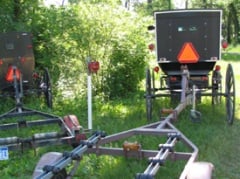
With increasing ties to the world has also come increasing technological change. Karen Johnson-Weiner notes this change in Train Up a Child: Old Order Amish and Mennonite Schools. Amish in the Centreville community have accepted phones to a greater degree, allowing them in phone booths and in some businesses. Additionally, bicycles have been allowed in some church districts, as well as rubber tires on large wagons.
Johnson-Weiner notes further ties in education between the two communities, with female teachers from Centreville teaching and living in the Elkhart/Lagrange settlement, and returning home for the weekend.
Centreville Amish, in addition to working in the RV factories to the south, contribute to Michigan’s economy as well. Some Centerville Amish operate dairy farms. Others run small businesses such as furniture, fabric, and vinyl shops (read more about Michigan Amish furniture businesses). As the largest Amish settlement in Michigan, Centreville also has a modest tourist industry.
Five distinct Amish settlements in Branch County
Branch County is home to 5 distinct Amish settlements, making it one of the most heavily-settled parts of Michigan. Amish communities can be found at Quincy (1977, 6 districts), Bronson (1971, 1 district), Reading/Hillsdale (1979, 2 districts), Coldwater/Kinderhook (2004, 1 district), and in California Township (1960, 5 districts).

One of the settlements, that of Quincy, is a Swiss Amish settlement, founded by Amish from Norfolk, New York (with roots in the large Swiss Amish community in Allen County, Indiana). Quincy is at present the second-largest Amish settlement in Michigan, and with 6 church districts has an Amish population of roughly 800.
Another of the Branch County communities, that of Reading/Hillsdale, in fact takes in part of neighboring Hillsdale County as well. Hillsdale for its part has an additional two Amish communities, at Osseo and Pittsford (1997, 2 districts), and the Swiss-roots settlement at Camden (1956, 4 districts).
Mio, site of present and past Amish settlement
One of the older Michigan Amish settlements is found at Mio in Oscoda County. This community of 3 church districts was founded in 1970. However, Amish had previously lived at Mio for over half a century. The original Amish community at Mio was founded in 1900 by Amish from Geauga County, Ohio.
These pioneer farmers to the region settled on land formerly covered by thick forests. Amish historian David Luthy notes that local land agents attracted both Old Order Amish and more progressive Amish-Mennonites to the region through advertisements in the widely-read Sugarcreek Budget newspaper. Luthy states that their efforts met with great success: “Few, if any settlements grew as rapidly as did the one in Oscoda County” (Settlements that Failed, Luthy, p184).
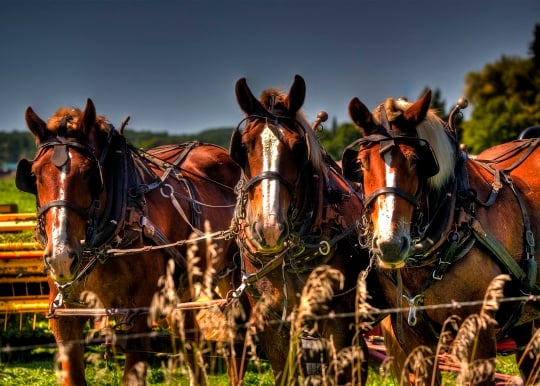
Mio did in fact grow quickly, with over fifty Old Order Amish families arriving in the first five years, attracted by the inexpensive, unimproved land. To begin farming in this region, farmers had to clear their acres of the many stumps that remained from logging. But those that did were rewarded, and the inexpensive land prices ($2-5/acre) tempted many to migrate to this heretofore little-settled area of north-central Michigan.
As Mio is located in the upper latitudes of Michigan, the settlement’s farmers dealt with a shorter growing season. However, Amish settlers saw positives in the extreme winters, Luthy reports. The Mio Amish “preferred this to the constant thawing as was the case in more southern parts of the state. They felt their winter was healthier and nicer, and they enjoyed using a sleigh instead of a buggy” (Settlements that Failed, Luthy, p185). Mio Amish farmers prospered, enjoying bumper crops on the formerly wooded Oscoda County land. Amish raised clover, hay, peas, corn, potatoes, buckwheat, and other crops.
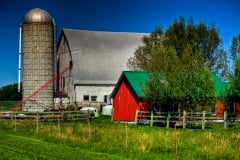
Eventually, the Old Order community began to go into decline. Part of the reason was that Old Order church members began joining the more progressive Amish-Mennonite congregation which had originally accompanied them to the region.
As the competing Mennonite church grew, Old Order Amish moved away or adopted more technological innovations, such as tractors. The Mio community went extinct as an Old Order Amish settlement with the death of the last remaining bishop in 1954.
Sixteen years later, a new group of Amish would settle here, founding what is today Michigan’s fourth-oldest Amish community. These settlers, coincidentally, also came from Geauga County, Ohio, and later included Amish from northern Indiana. The present-day Mio community has seen nothing like the growth of the original one, however, with a population of just 400 individuals after 40 years of existence.
Amish in the Upper Peninsula
Since 2008, an Amish settlement has existed in Mackinac County in the Upper Peninsula. This is the only Amish settlement located in the UP.
Previously, however, an Amish settlement did exist in the Upper Peninsula, at Newberry in Luce County. This was a very short-lived settlement, lasting only three years (1897-1900).
David Luthy, in The Amish in America: Settlements that Failed 1840-1960 gives the history of this settlement. Amish settlers from Ohio founded this settlement in the waning years of the 19th century. One challenge Amish settlers encountered was the particularly harsh northern Michigan climate.
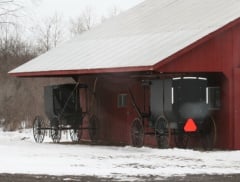
Luthy cites a letter from an early Amish settler who “mentioned that they hadn’t seen any ground since November 22nd and that presently in April there were eighteen inches of snow yet covering the ground” (Settlements that Failed, Luthy, p182). As a common reason for Amish migration is suitable farmland, harsher climates such as that found in the Upper Peninsula can particularly challenge unestablished, fledgling Amish settlements. The letter-writer also noted that the growing season was significantly shorter than that in Ohio.
A total of six Amish families settled this rugged area, with the last settler eventually moving to the new settlement at Mio in southern Michigan’s Oscoda County in 1900.
The present-day Mackinac County settlement is located near the village of Engadine. These modern-day Amish settlers no doubt face similar climate challenges as did the Luce County group. Consisting of a single district, it is one of the newest settlements in Michigan, and time will tell if it will thrive or fail.
A state of numerous failed Amish settlements
For various reasons, Michigan has been a state that has attracted Amish settlement. At the same time, numerous Amish settlements in Michigan have gone extinct. Despite its significant Amish population today, Michigan ranks as the state with the highest number of extinct Amish settlements, with at least 14 in its history.
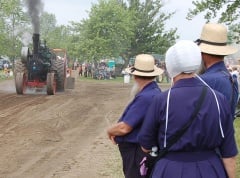
In addition to the extinct settlements at Mio and Luce County in the Upper Peninsula, Amish settlements have arisen only to later disappear at Spruce in Alpena County (1905-1922); White Cloud in Newaygo County (1895-1935); West Branch in Ogemaw County (1908-1942); and Hope in Midland County (1909-1930).
Michigan Amish settlements have failed in recent years as well, with at least 4 going extinct since 2000, including at Hale in Iosco County (1978-2007; a separate Amish settlement was founded here in 2006); Elsie and Ovid in Shiawassee and Clinton Counties (1987-2004); Coral in Montcalm County (1991-2008); and Vestaburg in Montcalm County (1993-2006).
Other Michigan Amish settlements
Despite its history of failed settlements, Michigan remains a state with a significant Amish population. While not nearly as large as that of neighboring Indiana or Ohio, in 2010 Michigan’s Amish population was estimated at over 11,000. It is also a state that has attracted new Amish settlement, with a net gain of nearly a dozen new communities over the past 2 decades (see Young Center Amish Studies’ Amish Population Trends 1991-2010).
At the same time, for various reasons Michigan has seen a net loss of Amish households in recent years, according to the Young Center at Elizabethtown College. From 2005-2009, Michigan’s Amish population lost a net total of 45 households to other states.

Besides the ones mentioned above, significant Amish communities can be found at Mecosta County (1982, 5 districts); Clare in Clare County (1981, 4 districts); Gladwin County (1979, 3 districts); Charlotte/Vermontville at Eaton County (1977, 3 districts); and Marlette/Brown City in Sanilac County (1987, 3 districts).
Additionally, across Michigan one can find a large number of younger settlements founded in recent years, numbering anywhere from a few families to a few hundred individuals.
For further information, see:
Amish in Michigan, Gertrude Enders Huntington
Amish Settlements Across America: 2008, David Luthy
The Amish in America: Settlements that Failed, 1840-1960, David Luthy
Train Up a Child: Old Order Amish and Mennonite Schools, Karen Johnson-Weiner
Plain Diversity: Amish Cultures and Identities, Steven M. Nolt and Thomas J. Meyers
The New American Almanac 2010, Raber’s Bookstore (Baltic, Ohio), Ben J. Raber
“Amish Population by State (2010)”, “Amish Population Change 1991‐2010”, and “Amish Migration Trends 2005-2009”; Young Center for Anabaptist and Pietist Studies, Elizabethtown College (http://www2.etown.edu/amishstudies/Population_by_State_2010.asp; http://www2.etown.edu/amishstudies/PDF/Statistics/Population_Change_1991_2010.pdf; http://www2.etown.edu/amishstudies/Migration_Trends.asp.)
Michigan Amish on the Amish America blog
The Amish in Michigan have been covered on numerous occasions on the Amish America blog. In 2008 a reader shared a dozen photos of a Montcalm County, MI Amish settlement. Each year a horse and carriage auction takes place, and is highly attended by the area’s Amish, at Mt. Pleasant, Michigan. A man raised Amish in Michigan discussed Amish life in one news piece.
Michigan Amish Tourism and Business-Looking for a Michigan Amish business? A listing of Amish businesses and tourist information for visitors to the Michigan Amish communities mentioned above.
Photo credits: Michigan Amish children-daBinsi; Amish boat launch-Sam Morrison; Camden Amish rugs-Katie Whitney; Mio Amish horses and barn-George Thomas; Amish buggies-Shannon Bromenschenkel; Amish steam engine pull-Joe Ross; Amish quilts-Mer Fuller


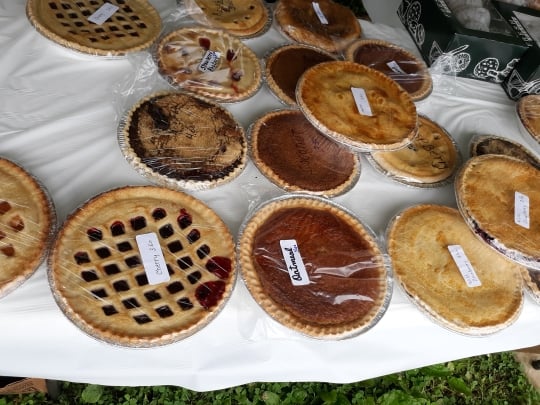
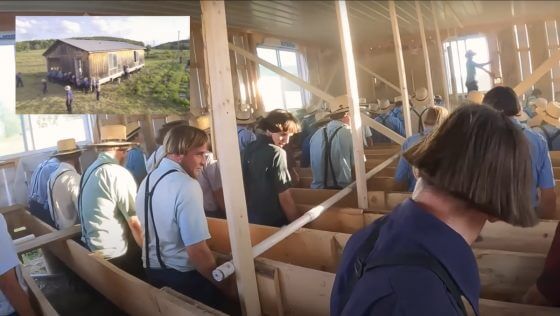
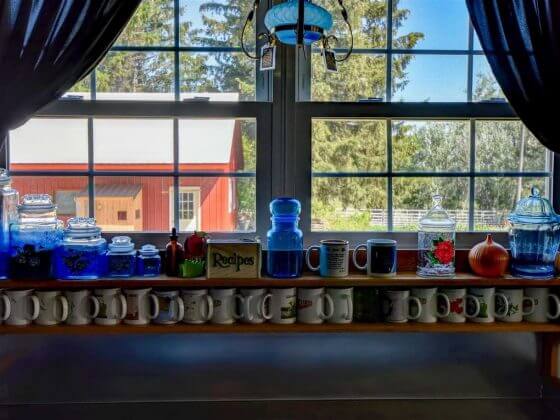
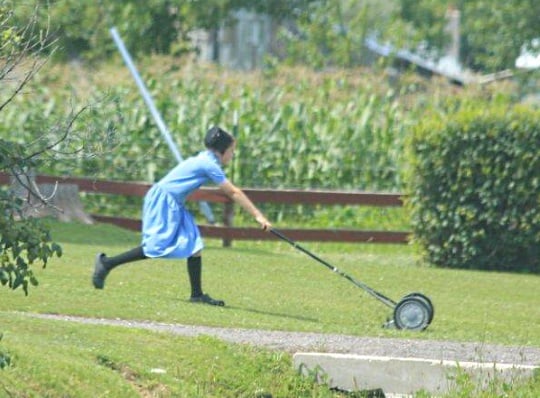
In need of a contractor
I am in search of someone to rebuild an existiog pole barn and do various remodel projects around my home. I live just south of Lawton, Michigan. Please email to unclejak@aol.com.
Amish in Mason County Michigan
Are there any Amish communities in Mason county Michigan?
There are none in that county Mark, unless one has been started in the past half-year or so.
Sofits facia siding
Please contact me regarding how I may reach the contractors/carpenters in Cornell Michigan. Do they still have a bakery and greenhouse open on Thursdays
St Joseph’s Amish
Do you know if the Amish near Shipshewana sell to the tourist in St Joseph’s County Michigan? I want to venture there.
Niggers
Do you know what a thermal image of filtered four times can reveal from 450 miles away one iCloud device iOS device? I give you a radio tower and you never talk about me you give me 450 miles away from an iOS device and I know everything wrong you’ve ever done and I’m gonna start talking about you only to a schizo which means he communicates to the devil and then repeats with the devil tells him to which is me and then he hears before you do something and tells you to do the wrong thing he does not trust you ever you always will do the wrong thingHe tries to deal himself out of the same hand it’s like blackjack he asked to play I can be the guy telling everybody what to do I’m not to blame he’s not to blame he works for me he’s the only schizo you guys can’t control the only schedule I can I just told you hell
Looking for someone who can add on to my house room's
I’m wanting to add on to my house . and do brush work and put roof on .new metal roof. Thanks for your time I can be reached at my email. Bearjackson1192@gmail.com
Looking for An Amish builder In Paradise Mi.
I am looking for a reputable Amish builder for a small metal home in Paradise up in the UP in the spring 2022.
My mailing address is POB 143 Paradise 49768 or email northernwildrose@gmail Thank you.
Puppy
I am looking for a small puppy near Kalamazoo Shorkie or a Cavapoo. But I want to purchase from a Amish community, to support their family.
My name Brandie, I can be reached by email.
Step on Guide needed...
I am taking a group of seniors on a mystery trip to the Coldwater/Quincey area. We are having a meal over there, doing some shopping and would like a narrated drive through the back roads and the downtown areas of the history please.
This is a paid job. Please contact me asap 248-960-6505.
Need Amish connections nearest to Traverse City, Michigan
Need Amish connections nearest to Traverse City, Michigan for building a pole building with living quarters above.
looking for a roofer for plymouth, michigan
needing a full replacement roof asphalt
Looking for Someone to Build a Little Library for my Yard
Hi,
I currently have a little library but it is falling apart and I would like to replace with a quality product. Is there anyone who would be available and interested in building one? I am happy to send pictures of what I have in mind (nothing fancy or complicated; just a box with a glass door to put books in for my neighbors). Thanks so much. I look forward to hearing from someone. Best Carla
UP Amish
We are camping in Sault st Marie Michigan. Every morning some Amish builders are passing the campground early in a horse and buggy. Is there possibly a new community closer to here than the one in Engadine? I can’t imagine them transporting their horses if they were just on a job. Thanks
What michigan laws do Amish have to follow?
Hello, I lice in central Michigan and have a very large group of Amish in my community. We have dealt with them on numerous projects, outings and community support projects. But one thing I am very curious about, but do not want to ask and come off as judgemental or against their ways so I am here to find out. I understand that michigan has “Cottage Food Laws” and that is what they operate under for their baked goods and things they sell to the “general public”. But I am curious if they must abide by other michigan food laws. For instance the Michigan Food Code laws? Ie. Can one open a butcher shop without being licensed and inspected by the state (even custom exempt butchers require an inspection at LEAST 1x a year, more so if they fail prior inspections. As well as do they have to meet all the same health and safety requirements as those who are NOT within the amish communities, when the products they’re doing are infact for the “general public” and not for their own use?
Amish communities in Michigan
This must be a very old article. I drive for the Amish in over a dozen Michigan counties that are not listed in this article.
clearing and small hunting cabin desired
I have 13 acres on the west Betsy River in Paradise Michigan, Chippewa County, Whitefish Township. It’s back in off the snowmobile trail and I desire some clearing minimum and a small hunting cabin /shelter to be constructed this summer….. Is there an Amish community close by that I can contact for the help that I need? June 16, 2023
Need garage built Rapid River area upper mi
Need a garage built in rapid river please reply 1906 280 9119